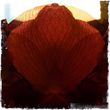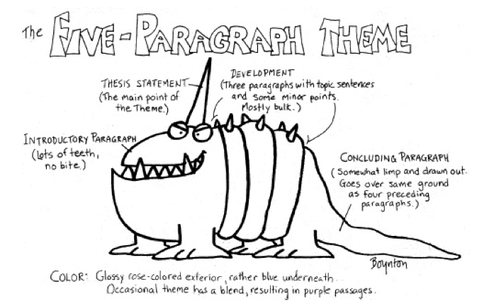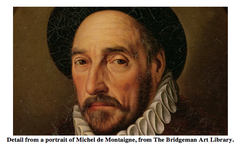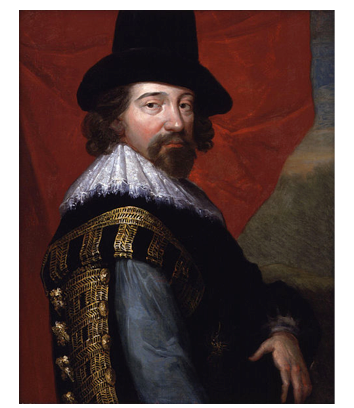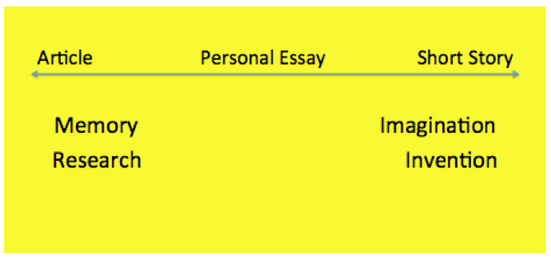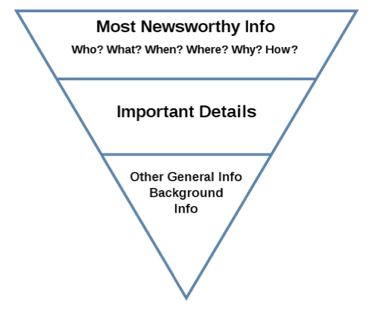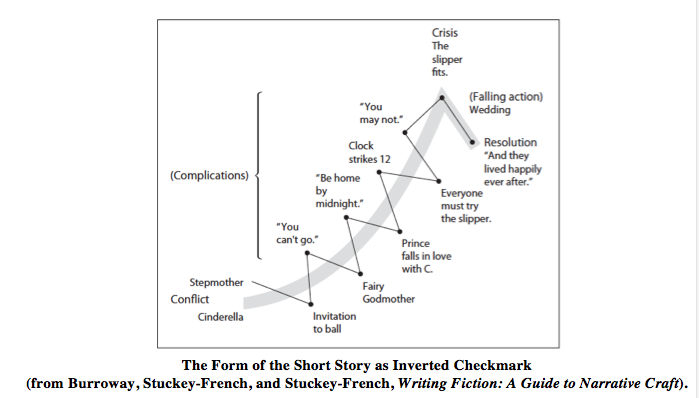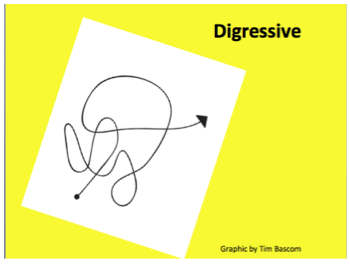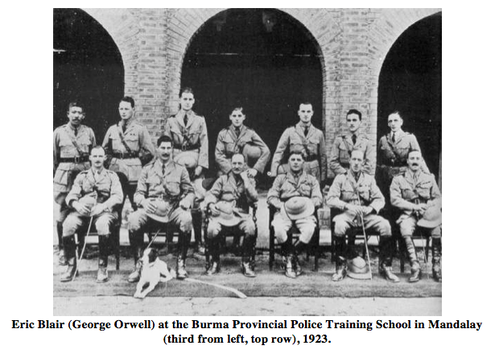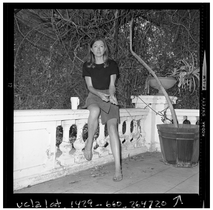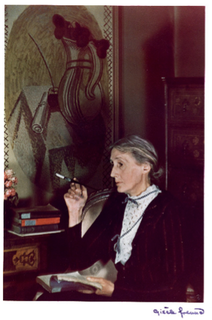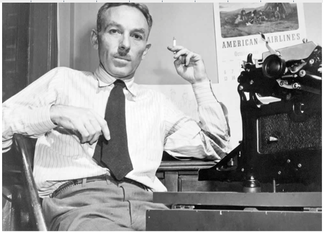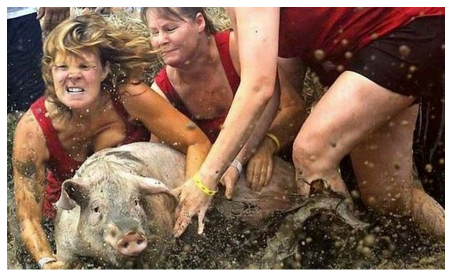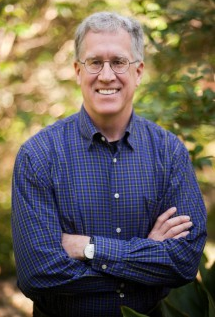ASSAY: A JOURNAL OF NONFICTION STUDIES
1.1
1.1
Notable Essay, Best American Essays 2014
|
What is an essay? Well, it ain’t a 5-paragraph theme – tell ‘em what you’re gonna tell ‘em, tell it to ‘em, then tell ‘em what you told ‘em. The essay is bigger, messier and more fun than that.
|
|
It’s so big, in fact, that it is not so much a genre as a galaxy of subgenres. Over the years the word essay has collected its own passel of adjectives: personal, formal, informal, humorous, descriptive, expository, reflective, nature, critical, lyric, narrative, review, periodical, romantic, and genteel. And it keeps collecting them. Now there are radio, film, and video essays. Maybe a map or field of Venn diagrams where all these adjectives meet and greet would be the best way to describe the essay.
Further confusing the situation, however, are the aliases behind which the essay has hid or been hidden: feature, piece, column (or once up on a time, colyumn), editorial, op-ed, profile, and casual. The title of an excellent 1984 piece (or was it an essay?) by Phillip Lopate on the first page of the New York Times Book Review summed the situation up quite nicely: “The Essay Lives—in Disguise.” The essay has also gotten lost under the big tent of terms like literary journalism, new journalism, literary nonfiction, and more recently, creative nonfiction. All of these catchalls are problematic. They lump the essay in with things that it is not and in so doing make an already sprawling genre seem bigger than it really is. Here the adjectives serve not so much to stake out small claims as to pump up that poor, scribbled thing that journalism is said to be, or clarify and legitimize the vast wasteland that has been locked outside the fiction corral by the non-definer that is non-. Scott Russell Sanders is quite good on this. Nonfiction, he points out, is “an exceedingly vague term, taking in everything from telephone books to Walden, and it’s negative, implying that fiction is the norm against which everything else must be measured. It’s as though, instead of calling an apple a fruit, we called it a non-meat.” |
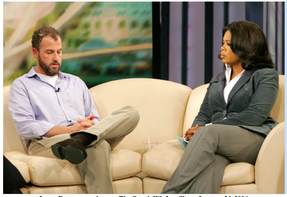
Adding the adjective creative may well intentioned but is finally of little help. Creative as opposed to what? Destructive? And just how “creative” can we be? James Frey creative, or just John D’Agata creative?
All this fuzziness but especially the essay’s proximity to fish-wrap journalism leave it stigmatized as the “the fourth genre.” The critic Suzanne Ferguson has argued, “like societies of people, the society of literary genres has its class system, in which, over time, classes reorganize themselves, accept new members, and cast old members into the dustbin. It has its aristocracy, its middle classes, and its proletarians.” |
|
E. B. White longed to be a poet and is known for his children’s books, but was, above all, an essayist. He meant his essays to last and they have, but they were written first on weekly deadlines for The New Yorker, then monthly deadlines for Harper’s, and finally again for The New Yorker when the mood struck him, but he always saw himself as a working journalist. In the foreword to his selected essays, he wrote, “I am not fooled about the place of the essay in twentieth-century American letters—it stands a short distance down the line. The essayist, unlike the novelist, the poet, and the playwright, must be content in his self-imposed role of second-class citizen. A writer who has his sights trained on the Nobel Prize or other earthly triumphs had best write a novel, a poem, or a play, and leave the essayist to ramble about, content with living a free life and enjoying the satisfactions of a somewhat undisciplined existence.”
|
|
Perhaps another reason for what David Lazar has called the “queering” or “definitional defiance” of the essay has to do with the fact that it had two fathers and so was, in a sense, split at the root. Its first practitioners, Michel de Montaigne and Sir Francis Bacon, who wrote at the turn into the 17th century, conceived of the essay in very different ways. For Montaigne, l’essai was a means of self-exploration, an exercise in self-portraiture, and a way for him to explore, tentatively and skeptically, his own thoughts and feelings; for Bacon, it was a form of “counsel,” a means of instruction, a guide to conduct, a way to test, recognize and appreciate the “truth.” Montaigne’s essays are digressive and shockingly personal. They grew as he revised—elaborating, circling back, and constantly asking himself, “Que sais-je?” or “What do I know?” Bacon’s essays, on the other hand, appear complete and once and for all, polished as a billiard ball. They’re short, aphoristic, tidy and impersonal, though always brimming with opinion and even pronouncement.
|
|
Now we have two more
adjectives for the essay – Montaignean and Baconian – which is fine, but if
we’re going to bring this queer little hybrid thing further into focus, perhaps
we should talk about it in terms of two kinds of writing rather than in terms
of two writers, whose work you may or may not know. Let’s lay out a spectrum on
which the essay sits (or hovers?) in the middle. This spectrum has nonfiction
at one end and fiction at the other, or more specifically, given that the essay
is short rather than long, it has the article at one end and the short story at
the other. And yes, I understand I’m doing some negative defining of my own
here. By saying an essay is neither story nor article, I’m still saying it’s
nonfiction and non-journalism, but I’m hoping to be a bit less vague, a bit
more comparison-contrast, a bit more precise.
|
|
The article is researched, fact-based. It provides information and usually tries to make a point. It is True with a capital T. It tries to be accurate. Its details and quotations are verified and fact-checked. It is a product of interviews, field notes, and memory. As for its form, if it’s a news story, it is likely organized by means of the inverted triangle, with its answers to the five Ws (who, what, when, where, and why) and the one H (how) frontloaded. Its intentions are announced in its headline and spelled out in its lede.
|
|
Or if, it’s another kind of
article—an academic article—it argues a thesis, and uses footnotes. It is organized
by means of a preconceived outline, marching from I. to A. to 1. to a…and so
on. William H. Gass, one of our great essayists, has made his living as an academic, and so
knows whereof he speaks when he contrasts the essay with “that awful object, ‘the article,’” of which, he says, it
pretends that everything is clear, that its argument is unassailable, that there are no soggy patches, no illicit inferences, no illegitimate connections; it furnishes seals of approval and underwriters' guarantees; its manners are starched, stuffy, it would wear a dress suit to a barbecue, silk pajamas to the shower; it knows, with respect to every subject and point of view it is ever likely to entertain, what words to use, what form to follow, what authorities to respect; it is the careful product of a professional, and therefore it is written as only writing can be written, even if, at various times, versions have been given a dry dull voice at a conference, because, spoken aloud, it still sounds like writing written down, writing born for its immediate burial in a Journal. |
|
At the other end of the spectrum is the short story. Unlike the article, the short story is fictional, made-up, a product of imagination more than of research. Hell, they can even include unicorns or hobbits, and be set in the future or a land far, far away. As for their structure, stories don’t always march from “Once upon a time” to “happily ever after.” They may turn metafictional, fold in flashbacks, and surprise in wonderful ways, but generally they follow a single traditional form, one that has been diagramed as inverted check mark. A conflict is triggered, grows increasingly tense and complicated until it finally arrives at a climax, which is followed by a short unraveling, or dénouement. Or, to put it another way: foreplay > orgasm > cigarette.
|
|
“One has a sense with the short story as a form,” says Edward Hoagland, “that while everything may be been done, nothing has been overdone; it has permanence.” It is tidy, original, elemental. It predated even cave painting, argues Hoagland, and is “the art to build from.” It explores the love and grief that hold the tribe together, the war and betrayals that tear it apart. A story is also universal because it is made up and so could be about any of us. This is what Aristotle was talking about when he drew a distinction between poetry and history in the Poetics: “The true difference is that one relates what has happened, the other what may happen. Poetry, therefore, is a more philosophical and a higher thing than history: for poetry tends to express the universal, history the particular.”
The personal essay arrived almost two millennia after Aristotle wrote the Poetics, and after several centuries of perhaps too much universality and church doctrine, too many answered questions, too much deferral of particularity and the self, and too little democracy. As a consequence, Montaigne flipped Aristotle’s assertion, arguing instead, “Chaque homme porte la form entire de l’humaine condition,” or “Each man [or person] carries [or bears] the entire form [or impress, or stamp] of the human condition.” For Montaigne, history isn’t less than poetry, because history carries the universal within it. Any living individual can represent the whole of humanity, the possibilities within each of us. Montaigne did not apologize for himself and his new approach, but laid down a challenge instead: “If the world find fault that I speak too much of myself, I find fault that they do not so much as think of themselves.” |
|
The essay sits somewhere
between an edited, organized, largely voiceless, researched, fact-based,
history-based article and a narrated, made-up, speculative, climactic, imaginary
story. It offers a third way, another way to find everyone’s story in one
person’s story. The personal essay differs from the inverted checkmark story in
that it doesn’t tell (or just tell) the story of an event. Instead it lets you
into what a particular person thinks about an event…or a subject, person, place
or problem. It offers – or essays – an answer to a question, a question such as
“What is an essay?” As a consequence, an essay is more digressive and
meandering than a story. It may be a story, says Hoagland, but it is the story
of a mind thinking.
|
|
Because we think in terms of narratives and tell stories regularly, an essay might well contain stories or even be organized around a single story. George Orwell’s oft anthologized and justly famous essays, “Shooting an Elephant” and “A Hanging,” are narrative essays. They slide toward the story end of the spectrum and live in what Doug Hesse has called a “boundary zone” that is adjacent to (or, even overlaps with) first-person short stories. Some of this has to do with how we read, with the contract between author and reader, and with the context in which we are reading. Orwell’s essays, for instance, have occasionally been anthologized in short story anthologies, where they are inevitably read differently than they would be in an essay anthology. “Reading a work as key to some more general truth,” says Hesse, “involves a different set of perceptions than reading it as representing some action, however meaning laden. We expect an essay story to show the way things are, a short story the way things happen.” Orwell’s narratives, for instance, are usually read as essays because they use the stories they tell to explore colonialism, complicity, and capital punishment, and Orwell’s own growing understanding of those larger issues.
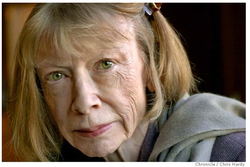 Joan Didion by Chris Hardy, 2003. Joan Didion by Chris Hardy, 2003.
Another way to put this is that essay can include an anecdote (again, one that actually happened) but to be an essay, it must rise above the anecdote and point us toward its significance. Fiction writers sometimes complain about being hounded in workshops by the show-don’t-tell-police, but essayists are always trying to figure out how to show & tell. A good way to begin drafting an essay is to explore a story that you yourself aren’t quite sure about, a story that haunts you, a story you need to tell but you don’t know why. Usually, the answer will come by slowing down and dramatizing the scene, by exploring what your thoughts were about the events at the time they occurred, and finally what you think about the incident now. The struggle is both to tell the tale but also to find your inner voice from that time (the voice of reflection) and your inner voice now (the voice of retrospection). In her classic essay “On Keeping a Notebook,” Joan Didion has a nice passage about the emotional work this process can require:
|
I think we are well advised to keep on nodding terms with the people we used to be, whether we find them attractive company or not. Otherwise they turn up unannounced and surprise us, come hammering on the mind’s door at 4 a.m. of a bad night and demand to know who deserted them, who betrayed them, who is going to make amends. |
|
This essay stuff is getting complicated, isn’t it? An essay recaptures the voice of a former self and in so doing enables one’s current self to talk about that former self, and then one or both of them, though most likely just the current self, talks to the reader about the lives lived by both selves. Got it? Maybe this passage from Virginia Woolf’s “The Modern Essay” (1925) will help. In it she’s talking about how effectively Max Beerbohm was at getting his voice (or at least a voice that we take to be his voice) down onto the page:
He was himself, simply and directly, and himself he has remained. Once again we have an essayist capable of using the essayist's most proper but most dangerous and delicate tool. He has brought personality into literature, not unconsciously and impurely, but so consciously and purely that we do not know whether there is any relation between Max the essayist and Mr. Beerbohm the man. We only know that the spirit of personality permeates every word that he writes. The triumph is the triumph of style. For it is only by knowing how to write that you can make use in literature of your self; that self which, while it is essential to literature, is also its most dangerous antagonist. Never to be yourself and yet always--that is the problem. …Even things in a book-case change if they are alive; we find ourselves wanting to meet them again; we find them altered. So we look back upon essay after essay by Mr. Beerbohm, knowing that, come September or May, we shall sit down with them and talk. |
|
Notice that Hoagland does what he says an essayist should do. He enacts the theory he advances. His use of the term “nap” is an example of his own nap. Describing prose style in terms of fur is a metaphor that generates sparks.
Just being distinctive,
however, is not enough. In “Everything That Rises Must Converge,” Julian’s
mother thinks she’s bought a distinctive hat, one in which she won’t meet herself
“coming and going” (though of course she does), but the hat is purple,
feathered, floppy, and “hideous.” A store-bought hat, like a machine-made
T-shirt, can be ordinary or hideous, but so unfortunately can a hand-knit and nappy
sweater. You still have to have style, which is a result of hard work, much
reading, ruthless revision, and a full closet of options, or as E. B. White
puts it: “The essayist arises in the morning and, if he has work to do, selects
his garb from an unusually extensive wardrobe: he can pull on any sort of
shirt, be any sort of person, according to his mood or his subject
matter—philosopher, scold, jester, raconteur, confidant, pundit, devil's
advocate, enthusiast.”
|
|
So you pull on the right shirt and try to avoid getting caught with your pants down. You present yourself without making a fool of yourself – how hard can that be? Well, damn hard, as Sanders suggests. Ever go through a day without a fib? Come on…be honest.
Let me be honest. I don’t think I’ve truly defined the essay here. I’ve tried…with my diagrams, pictures, words, and little spectrum…but I think pinning down a genre is as tricky as pinning down a self. Derrida said as much when he famously and ironically opened his essay “The Law of Genre” with the following declaration, the following false promise: Genres are not to be mixed. |
|
And then, in his essay (or was it an article? a manifesto? a parable?) he demonstrated that the law of genre is that that there is no law, for the law will always be broken (which is the new law but not a law at all). All genres are contaminated by other genres, and taxonomy itself is a subjective and relativistic exercise.
I must admit, such post-structuralism makes me uncomfortable. I’d like something to hold onto. Maybe the best way to define the essay is simply to gesture toward it with a simile. At various times Montaigne called his book of essays a self-portrait, an autopsy, his child, a gift to a friend, an on-going tale, a patchwork quilt, a fricassee, and a pile of crap. Hoagland calls the essay a greased pig and far be it from me to assume I’ve grabbed it. |
Click here for a printable PDF with Works Cited.
|
Ned Stuckey-French is the author of The American Essay in the American Century (Missouri, 2011), which was a Choice Outstanding Academic Book for 2012. He is also co-editor (with Carl Klaus) of Essayists on the Essay: Montaigne to Our Time (Iowa, 2012), co-author (with Janet Burroway and Elizabeth Stuckey-French) of Writing Fiction: A Guide to Narrative Craft (Longman, 9th ed.), book review editor of Fourth Genre, and an associate professor of English at Florida State University. His articles and essays have appeared in journals and magazines such as In These Times, The Missouri Review, The Iowa Review, The Normal School, Tri-Quarterly, Walking Magazine, culturefront, Pinch, Guernica, middlebrow, Journal of American History, and American Literature, and been listed five times among the notable essays of the year in Best American Essays.
|
